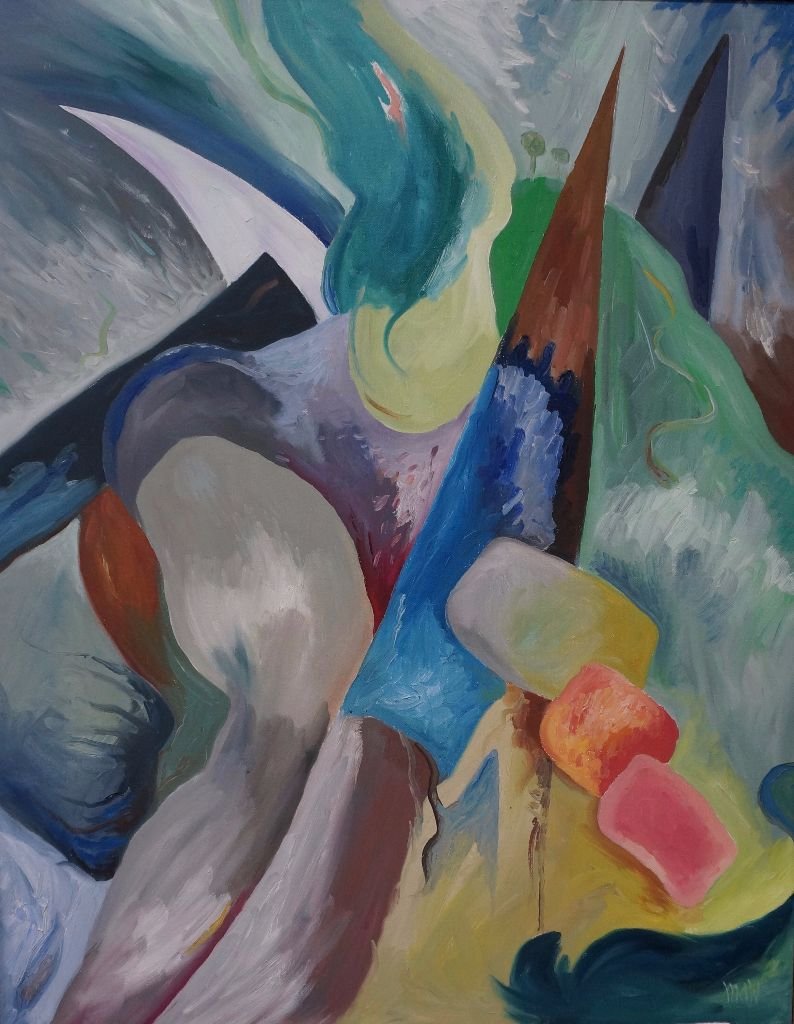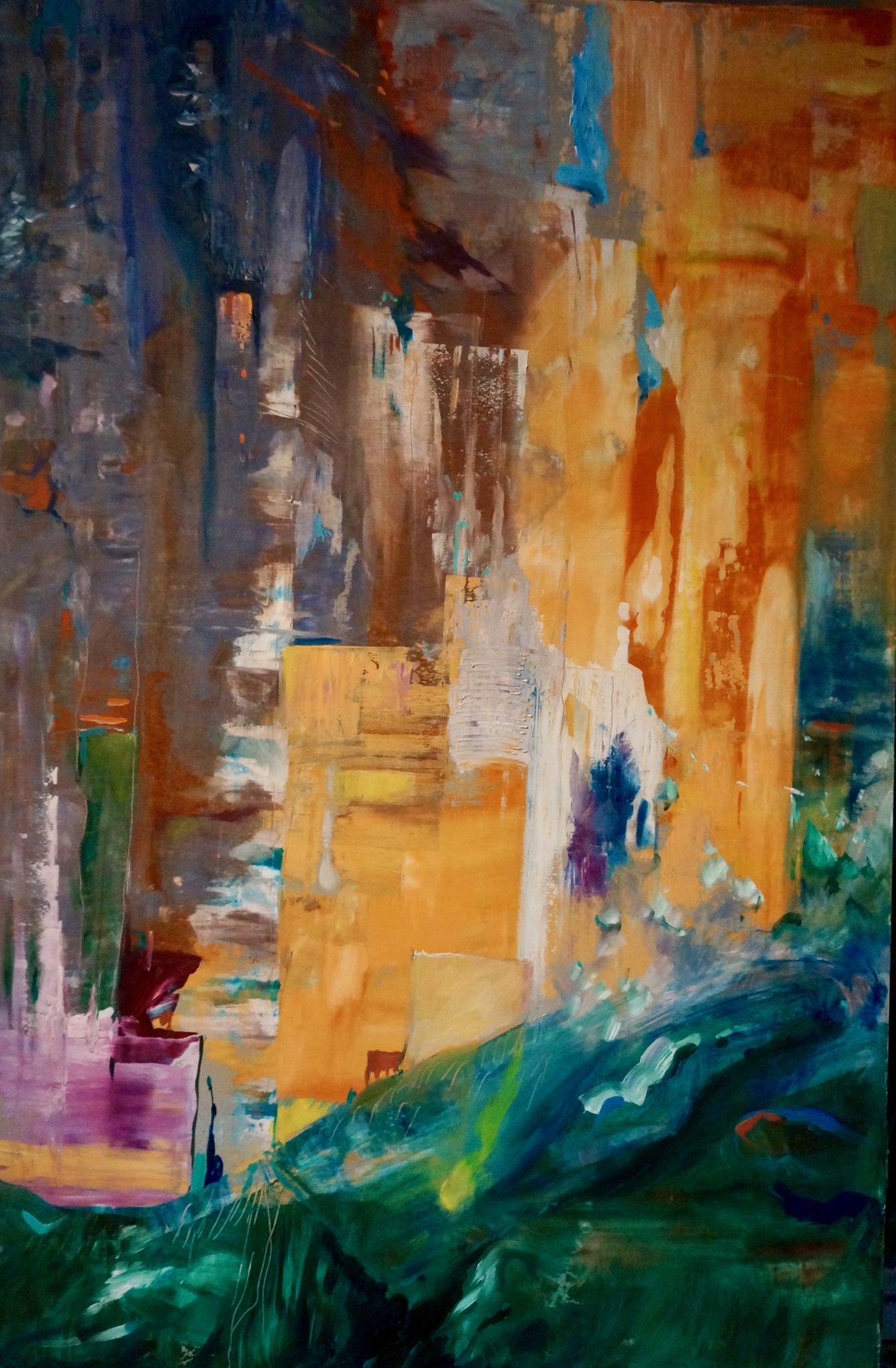It is not unusual to wind up with a painting that becomes extraordinarily difficult. Sometimes as artists we try something new and we get half way and get stuck. We are just not sure how to proceed – we are faced with a difficult painting. When this happens it is best to put our brushes aside and to rest on it for awhile.
After a time pull out that painting and have another look and ask yourself what is it you are trying to do? What mood, what effect?
Try to establish a basic, fundamental direction for the painting.
WHen I have a difficult painting – one that I am just not sure about, I will attempt to get one small area of the painting right. This may mean getting a particular design correct, or just the right hue or shading but get it just the way you want it. Be very satisfied with that one small part. It is surprising how a painting can develop once there is one section that is done perfectly. All the other parts can then begin to relate to that first successful area.
Tag: abstract art for sale
How to look at Abstract Art

How to look a abstract is like explaining to someone how to listen to jazz, or what to appreciate in modern dance. Sometimes I am asked to explain a painting. The intent here is understandable, assuming that something can be better or more fully appreciated with some background information. Some abstract paintings will have subjects or forms that are vaguely representative – objects can be identified. This is satisfying to the brain, to our emotions. Just prior to the advent of abstract painting, the impressionists informed the public that the forms they were used to seeing were actually made up of fragments, particles of light, a myriad of reflections. It took awhile for the public to respond to this new way of seeing nature, of viewing form.
When there are no references – when nothing is recognizable we are mentally and emotionally placed in a very different orientation. How to look at an abstract painting has very much to do with releasing of preconceptions. By accepting the images as they are, without judgement allows the viewer to comprehend the message of the painting. An abstract painting is rarely intended to impart some sense of profoundness. A relaxed and receptive viewer however may discover the ‘message’ the artist was attempting to manifest. More often the viewer discovers something that resonates for them alone. Each viewer may see something entirely different and even different from what the artist had intended to convey. This is the ultimate benefit to abstract and especially non-objective painting.
As a rule non-objective painting especially is rarely planned out completely. There may be sketches, there may be patterns that have been worked out and sometimes there is a distinct feeling an artist is hoping to convey. Once the painting begins other forces come to play. These forces operate beyond any original conceptions or design. One of the purposes of abstract painting is to allow these inherent and internal forces to be seen. One element that is put down and painted tends to demand a sympathetic painterly response. This goes on and on as the painting is developed. When a viewer can detect these relationships and even to imagine how the painting developed is what makes viewing abstract art so exciting. It goes beyond or under reality. We like to say it comes from the sub-conscious, at least there is a synergy between the conscious original idea and the sub-conscious that is brought forward. The artist allows the two elements to work together. Next time you look at an abstract or non-objective painting, ask yourself how you feel about the painting. How does the painting make you feel? What passages in the painting appeal to you ? Internally do you feel a connection to the piece? The effort to make sense of this type of painting is a waste of effort, any more than trying to make sense of good jazz. Just enjoy the piece as it is. Let it speak to you on its own terms.
Importance of distinct lines in painting
Both in drawing and in painting there is an inherent ‘importance of distinct lines in painting.’ This observation can occur in the process of painting and then later when the painting is being studied for further improvement. My own criteria for determining if a painting is actually complete is to determine if the lines of design are rendered clearly, precisely and with some degree of ‘punch’.
This quality of having distinct lines whether the painting is an abstract or more realistic will reveal if the artist is assured of what he is saying or if the artist is a beginner and floundering with his brushstrokes. Strive to have you lines decisive. Do they properly and distinctly outline or highlight subjects, objects or characters in the painting? What do I mean by distinct? It means the line has a certain quality that is crisp and assured rather than wandering and searching. Music has this inherent quality in that the notes themselves must be exactly followed, point by point, score by score.
There is the feeling in studying an oil painting by Singer Sargent that he looks very carefully before making a stroke. He works first at getting just the right shade, chooses the perfect sized brush, studies the area and then makes his line with precision and confidence. This goes on in each subsequent area, thereby building the painting with careful attention. Drawing helps immensely to establish confidence in creating proper line because of course drawing is essentially all about ‘line quality’. If a line tends to waver or is drawn without real clarity it gives the drawing a feeling of amateurism, of searching. Compare this to say, Rembrandt’s landscape drawings rendered carefully but quickly and with great purpose and confidence.